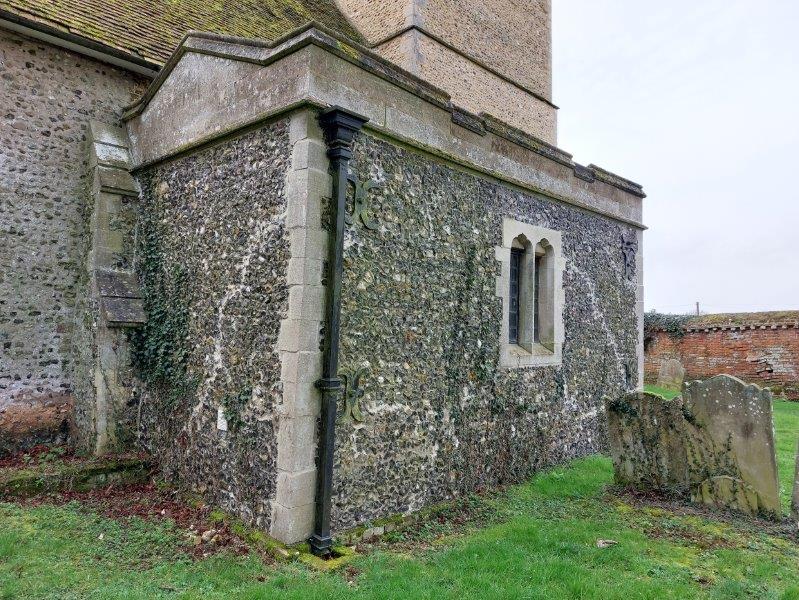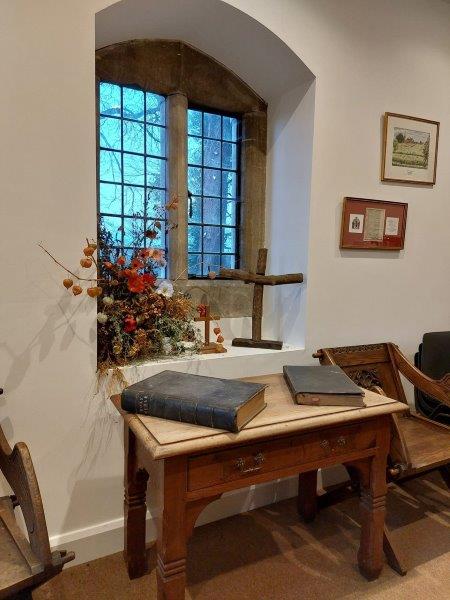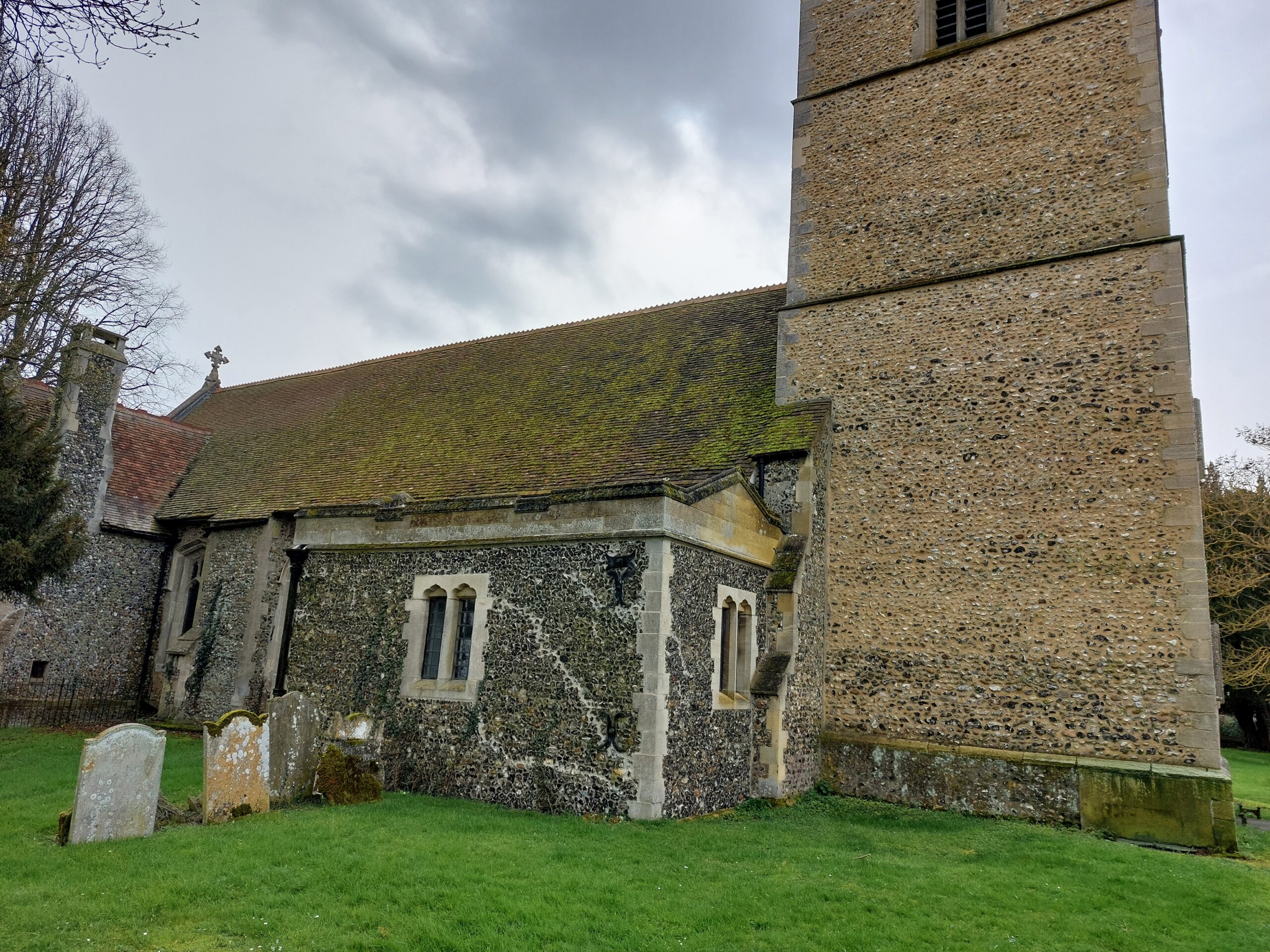The vestry was added to the building at the end of the 19th century during the latter years of the ministry of Revd Traviss-Lockwood.
It is believed that the north door (now to the vestry) was discovered during some other works which were taking place around that time. One can only imagine how that happened, and how the discovery must have made the congregation feel at the time! Drawings of the church dating from 1868 (in conjunction with works to raise the roof) show a solid wall along the whole of the north side, and pews adjacent to the full length of the nave. Apparently, there was no evidence, either internally or externally, of a doorway in the north wall. Once the doorway was uncovered, a decision was made to construct a vestry and to use the existing doorway for access. (It is believed that the original door was still in situ. Certainly, the door currently in place, like the main south door opposite, has been dated to the early-mid 13th century by Jane Geddes in her 1999 book Medieval Decorative Ironwork in England, published by The Society of Antiquaries of London.)
Work began on the vestry in 1894 and was completed in 1898. It was primarily funded by donations from the village, but some money was also donated by the American descendants of John Eliot who had recently paid for the installation of the East Window. Sadly, within a very short time, the new vestry began pulling away from the original church wall, risking damage to the main church building. This was monitored for a while, and eventually, it became necessary to rectify the problem. In 1916, three tie-bars were installed by a local contractor (possibly a farmer) to hold the vestry to the main church building. The largest of these is still visible, stretching right across the rear of the nave.
The vestry was never just the Rector’s domain. Cupboards were installed for the hanging of choir robes as well as the minister’s vestments. The names of some of the past choristers are still visible – written alongside the hooks which would have held their robes even though they have long since joined the angelic choir in eternal praise of the Lord in whom they placed their faith.


In the early 21st century, concern grew over new cracks emerging between the vestry and the church. Consideration was given to a project which, alongside renovation and restoration, would have seen the installation of a toilet and kitchen at the western end of the vestry. An archaeological dig was conducted in the area as part of the planning process, and some Saxon remains were uncovered (and reburied). It was decided that the project was too expensive. (The late Sir Roger Parker spoke for many when he said it was “A lot of money to spend a penny!”)
Instead, work was started on refacing the stonework on the Tower. Sadly, but not altogether unexpectedly, given the fallen state of mankind, during this work, thieves used the scaffolding tower to access the vestry roof and stripped it of its lead covering. Then, while agreement was being sought from the relevant heritage bodies about the possibility of using a permanent non-lead replacement for this, the temporary roof began to leak. During the Covid pandemic (when church buildings were locked), the ensuing water damage hastened the need for repair and renovation.
Consideration was given again to a significant redevelopment project (which, like the previous one, would have seen the introduction of a toilet), but in the end, a more modest project was undertaken: the floor was raised, the walls were reinforced and the roof was finally and properly repaired (not with lead!). A new electric heater was introduced to the vestry for the first time along with more power sockets to make it a resource with increased flexibility for use, e.g. for Sunday school, Bible studies or meetings of the Parochial Church Council.
The new vestry room was first used as a convenient space from which to share refreshments at an organ recital given by Mr Mitchell Farquharson, ARCO, in June 2022 in aid of the Friends of Widford Church who had donated generously towards the repairs. Today it is used generally as one would expect, but has also been used to accommodate diners at the church’s “Community Lunch” – a first fulfilment of the possibilities that were envisaged as the project began.
At time of writing, there are new plans afoot for further development…






